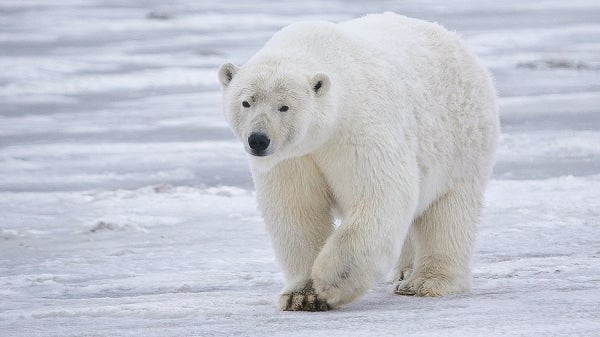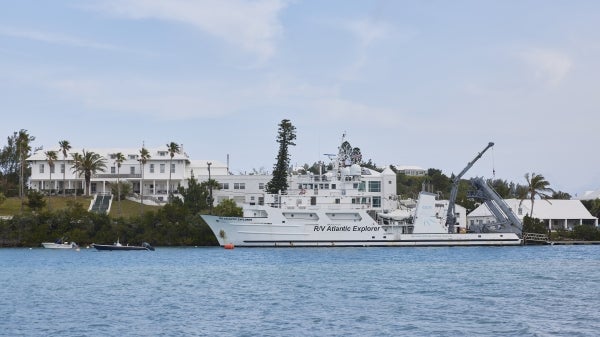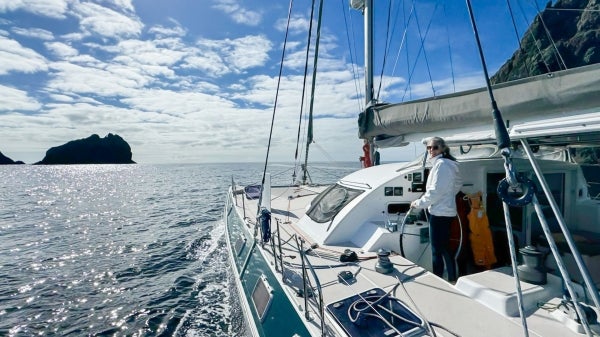When resource competition leads to cooperation

Accounting for roughly 52% of Burkina Faso's population, the Mossi people are sedentary farmers whose primary residence is along the Volta River basin near the center of the country. Photo by Gilles Paire
The United Nations has estimated that in the past 60 years, more than 40% of all internal armed conflicts have a link to competition over natural resources. Climate change, population growth and increased consumption are expected to exacerbate future conflicts. However, a new paper by Elisabeth Kago Ilboudo Nébié, an assistant professor with the School of Human Evolution and Social Change at Arizona State University, argues that resource competition can lead to cooperation rather than conflict.
Nébié and Colin Thor West, a professor of anthropology at the University of North Carolina at Chapel Hill, co-authored “Isolation, encroachment and saturation: patterns and processes of pastoral intensification in the Sondre-Est pastoral zone of Burkina Faso.” The paper uses the example of Mossi and Fulbe cooperation in Burkina Faso, a landlocked country in West Africa, as an adaptable example of cooperation between resource competitors.
Accounting for roughly 52% of the region’s population, the Mossi are sedentary farmers whose primary residence is along the Volta River basin near the center of the country. The Fulbe, an ethnic minority in the region, are historically nomadic cattle herders who set up temporary camps on the outskirts of farmer settlements.
In 1974, a Dutch nongovernmental organization partnered with government agencies to resettle Fulbe herders in the Sondré-Est Pastoral Zone near Mossi farmers. The resettlement has caused the relationship between the Fulbe and Mossi peoples to shift over the past 40 years. With Fulbe herders permanently settling in Mossi areas, there is new competition for water, space and crops. Despite facing new resource challenges, Nébié and West said that expected conflict has not risen.
“It is important to keep in mind that, at the time, there were terrible droughts, land degradation and famine in the northern regions from which the Fulbe and Mossi were resettled. These were voluntary resettlement schemes, and conditions were much, much better in these river valleys once river blindness was eradicated,” West said.
Farmer-herder relationships like the Mossi-Fulbe in Burkina Faso usually follow a formal model of isolation, encroachment and saturation. In initial interactions, there is ample land available to both groups and they can coexist with little disruption to their daily lives. As the farmer’s crops expand and the herder’s animals reproduce, available land begins to diminish and encroachment follows. In this stage, there is some competition for resources. In the final stage, available land is sparse and the two groups actively compete for resources and space. This stage is called saturation, and it is the point in which conflict is expected.
At the heart of what prevented conflict in Burkina Faso was cooperation and collaboration, according to Nébié and West.
When the Dutch NGOs resettled the Fulbe, they introduced the herders to advancements in animal rearing. Firstly, the Fulbe were trained to use fodder crops to feed their animals instead of using Mossi farming lands. Secondly, they were provided with veterinary services, and local water sources, such as wells and pumps, were improved.
Citing their cultural identity as pastoralists, the Fulbe initially resisted learning to raise fodder crops and remaining sedentary. However, over time, as access to grazing land became scarce due to the expansion of Mossi farming, the Fulbe necessarily adopted the practices. The result was smaller herds because the cattle were more robust and healthier, thus providing more milk and meat. In return, Mossi farmers benefited from a local market for meat, animals and animal products such as hides and milk.
Although the success of Burkina Faso hinged on the cultural flexibility of the Fulbe, Nébié and West suggest that adaptation is a normal part of survival when moving to a new location.
“The Fulbe in Sondré-Est made changes that helped them survive but didn’t completely abandon their way of life. They have key family members who still pursue seasonal migration, and they are entrusting cattle to relatives in wetter regions. They incorporated farming and fodder cropping, but they still centered their lives around cattle, milk production and maintaining ties with other mobile Fulbe groups. This allowed them to adapt while staying true to their identity as herders,” Nébié said.
While the example of Burkina Faso doesn’t initially appear to have relevance beyond its borders, Nébié and West argue that its implications are far-reaching.
“It shows that with the right social structures, cooperation is not only possible but sustainable, even when resources seem limited. Instead of framing these relationships as a simple contest for resources, we see how important negotiation, cultural norms and leadership are in managing shared spaces,” Nébié said. “This kind of approach can also shape how we think about conflict resolution. By recognizing past successes in cooperation, we have a chance to apply those lessons to today’s challenges.”
More Environment and sustainability

ASU postdoc's endangered species tool gets national attention
Research on endangered species by recent Arizona State University graduate Olivia Davis is getting national attention. Olivia Davis Davis, who graduated from the…

Craig Carlson named president, CEO of ASU Bermuda Institute of Ocean Sciences
Craig Carlson, one of the planet’s leading marine biology researchers, has been appointed as the new president and chief executive officer of the Bermuda Institute of Ocean Sciences, a unit of the…

Adventurer and space visionary embarks on a new journey at ASU
Julia Tizard Hunter is an explorer in every sense of the word.In fact, Hunter’s most recent adventure was a 10-month voyage across the Pacific Ocean with her husband and two sons, aged 8 and 10 years…